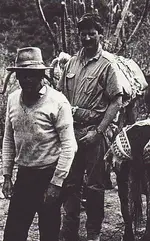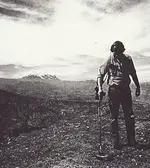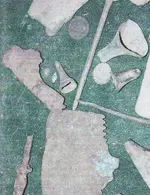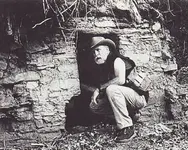Re: Incas's treasures
Vox, I just wrote a post, however it was too long, so I’m writing again and will break it into chapters for several posts. To make it easy, let’s call them Plazuela1, 2, 3, etc. My spelliong will be wrong on locations, as I don’t have my papers near me. Anyway, I love this topic as it is near to my heart, as is Bolivia. It’s been twenty years since I’ve last been to Bolivia, but should you decide to go, I’ sure you’d find it to be the adventure of a lifetime (if not your last adventure!)
I was contacted over twenty years ago by a gentleman and life long adventurer, Richard “Bud” Gustin, and asked over the phone if I would be interested in going to Bolivia to search for a treasure. Bud was looking for someone who was familiar with the twin box, and the east coast representative of White’s would always recommend me, as I used one. Without hesitation I answered “yes”!
Our group consisted of four men, Bud, myself (john Irwin), a mine man named Nick Joslin (who is is sadly now diseased, and peter Steinlickner, a “Swizter” who would trade in raw gemstones, and who spoke the native quechua, and who is believed to be diseased also.
Bud had spent years researching the legend of the Plazuela treasure, going so far as to research the library of Madrid. The treasure itself , as you may already know, was believed to have been secreted by Spanish priests in a cave cut in a hillside. Te cave was supposedly dug by the local Indians who were murdered afterwards. The cave was believed to be sealed with an “iron door” and the interior laced with arsenic.
The treasure itself was believed to consisted of chests of silver and gold, and a “Madonna with diamond eyes”.
Two attempts were made to find this treasure; one in the 1800’s, and another in the 1920’s. A small party went again in the 1960’s equipped with only a twin box, but their venture was cut short by rain and they only stayed half a day. They found one piece of bronze which has mistakenly been represented as “possibly a part of other treasure attempts.” This is not the case, as I will explain later.
We have since read that a National geographic expedition may have been made to plazuela after us, though we have yet to confirm it. As we were introduced as “doctors” to the locals (doctors command respect) it may be that this caused confusion. At any rate the Indians and “mayor” of the tow of inquisibe told us we were the first to arrive since the 1960’s.
We crossed the Yungas, climbed the elevation of the Andes, finally to descend into the more lush Cordelera which contained the tributaries to the Amazon. We arrived at the nearest village to the Plazuela by truck along what is referred to as “the death road”. This was in the days before it was rebuilt, and there were constant markers and crosses along the route to confirm it’s name. From there we descended by mule the steep mountainside and into the valley, and from there we traveled twenty miles by mule along the river bed, having to cross on numerous occasions.







 It is 55 kilometers (35 mi.) long but takes 5 1/2 - 6 hours and a 5# bag of hard candy in good weather.
It is 55 kilometers (35 mi.) long but takes 5 1/2 - 6 hours and a 5# bag of hard candy in good weather.